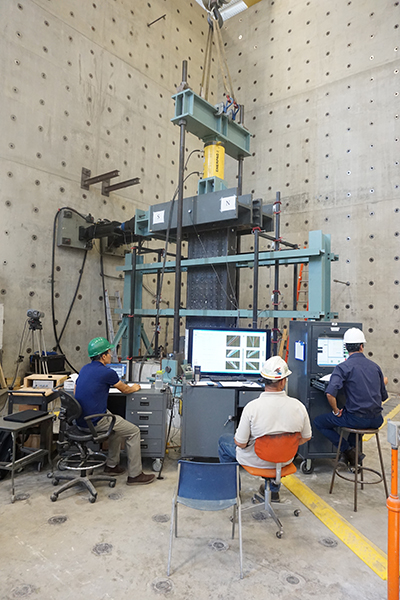 For the last 30 years, high-rise office building construction has been dominated by a single structural system: reinforced concrete core walls surrounded by structural steel composite floor framing.
For the last 30 years, high-rise office building construction has been dominated by a single structural system: reinforced concrete core walls surrounded by structural steel composite floor framing.
The reasons for this are many. Concrete walls situated around elevator shafts, exit stairs, restrooms and mechanical/ electrical services offer the benefits of geometry—all while satisfying the owner’s and architect’s programmatic requirements. Plus, fire and acoustical separations, which are easily achieved, and adequate structural stiffness and strength can be readily provided via this solution.
Inherent to concrete core wall construction is the cycle time required to set formwork, install reinforcing steel, place embedded plates, install sleeves and block-outs and place and cure concrete before the next level of the core can be constructed. While cycle times vary based on core geometry, reinforcing steel congestion and the skills of the contractors in the geographic location, a common time frame required to construct each core level for a typical tower is three to five days per floor.
On the other hand, erecting the surrounding steel floor framing can occur at a much more rapid pace. Two tiers (four floors) of steel erection per week are possible in many markets, allowing the steel erection to proceed at roughly twice the pace of concrete core construction. This cycle time disparity often delays the start of steel erection. Timed perfectly, the final steel beams are erected just after the concrete core walls are completed. But consider that for high-rise projects, the difference in pace between the two materials can add up to several months of extra time required to complete the tower. For owners and developers, this can equate to substantial additional costs in construction loans and contractor general conditions and a delay in collecting rent from building occupants, potentially totaling millions of missed dollars.
Luckily, a new approach to core construction has emerged. And in fact, it’s currently being implemented as part of the Rainier Square Redevelopment project in downtown Seattle. This approach, a concrete-filled composite plate shear wall (CF-CPSW) core system, is commonly referred to as a “sandwich panel wall system” and directly addresses the cycle time disparity. In the case of Rainier Square, a schedule savings of three to four months is anticipated as the entire superstructure can be erected in sequence without the timing restrictions of concrete core construction. The core wall arrangement is identical to a traditional concrete core, providing similar benefits to owners and architects.
For more about this steel system that is revolutionizing the design and construction of tall buildings, see the article “Core Solution” in our current February issue (available now!).